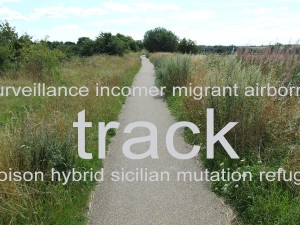I first came across Giambattista Vico in reference to ecological thinking and the Scottish poet George Bruce.
I was unaware that McLuhan was directly influenced in following by Vico and Francis Bacon:
The Laws of Media
Through journals he kept during the early part of his academic life he intimated his intention to codify a set of universal or general laws or principles at some point in his career. This was done perhaps as an indicator of the scope of his ambitions.
Until the relatively recent posthumous publication of Laws of Media in 1988 his methodology remained controversial and poorly understood by many as did his theories on media.
The fullfilment of his ambitions is best exemplified by Laws of Media which first appeared as an article by McLuhan in 1975 and formed the basis of his last decade of collaborations with many including Barrington Nevitt (with whom he has co-authored Take Today: The Executive as Drop Out. Laws of Media as a book was completed by McLuhan’s son Eric, and published a decade after his death.
After a decade-long search, Eric and Marshall McLuhan discovered that there are four such messages or characteristics that they posed as probes: What does the artefact extend, enhance, accelerate or enable? When extended beyond the limit of its potential, into what does it reverse? What does it obsolesce or cause to lose its dominance? What does it retrieve from the past that had been formerly obsolesced? Given that these can apply to all conceptions and creations of humankind, all human artefacts be they tangible or intangible are media. Using the four media laws allows us to find connections and ratios or analogues among things and ideas that are not obviously connected, thereby assisting us in becoming aware of the hidden ground.
McLuhan called this four fold set of laws and figure ground relationship a “tetrad”. Some posit a fifth law based on McLuhans statement that much of his work is mennipean satire. Today’s audience would recognize this technique at it’s present coordinates at adbusters.com on the internet and represented in phenomena such as culture jamming. Below right is a graphical representation of a tetrad.
The roots of McLuhan’s interpretation, and the laws of media, are deeply rooted in the past. They are traceable to the ancient Western curriculum, the trivium (logic, rhetoric, and grammar) a tradition which McLuhan re-discovered while preparing his doctoral thesis at Cambridge. In the Laws of Media, he linked these own discoveries to the work of Francis Bacon and Giambattista Vico.
http://www.wordiq.com/definition/Marshall_McLuhan Last accessed: 08/11/10

